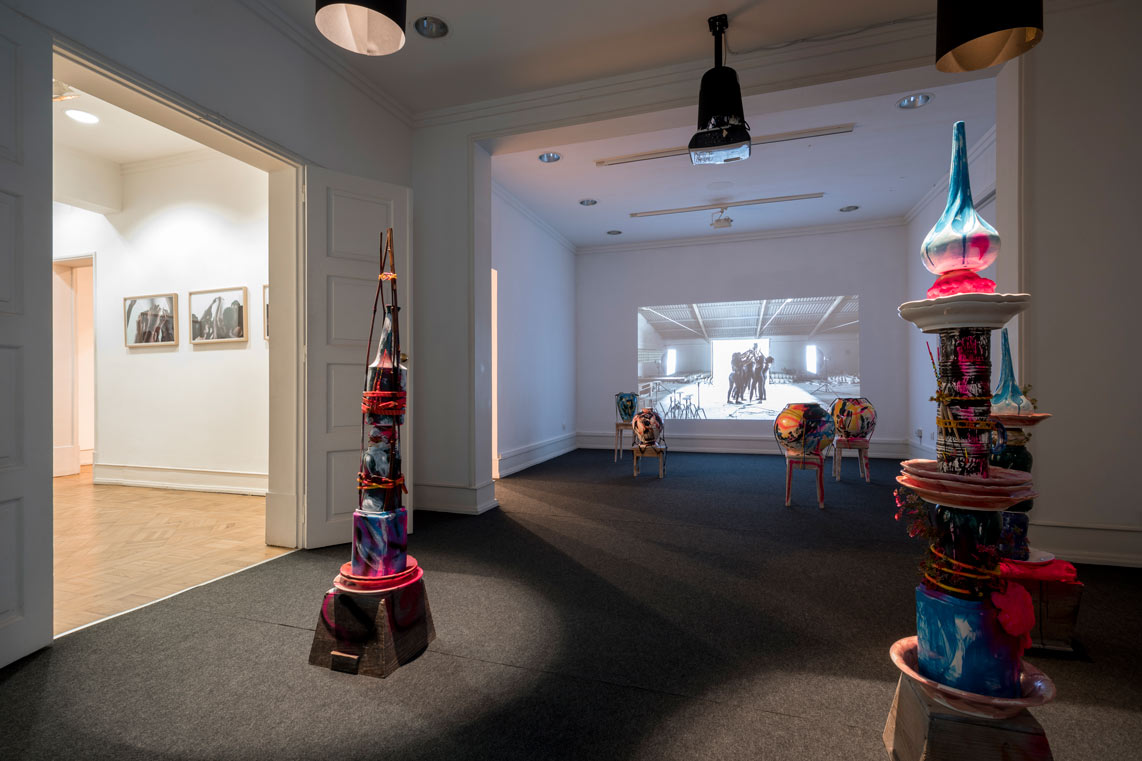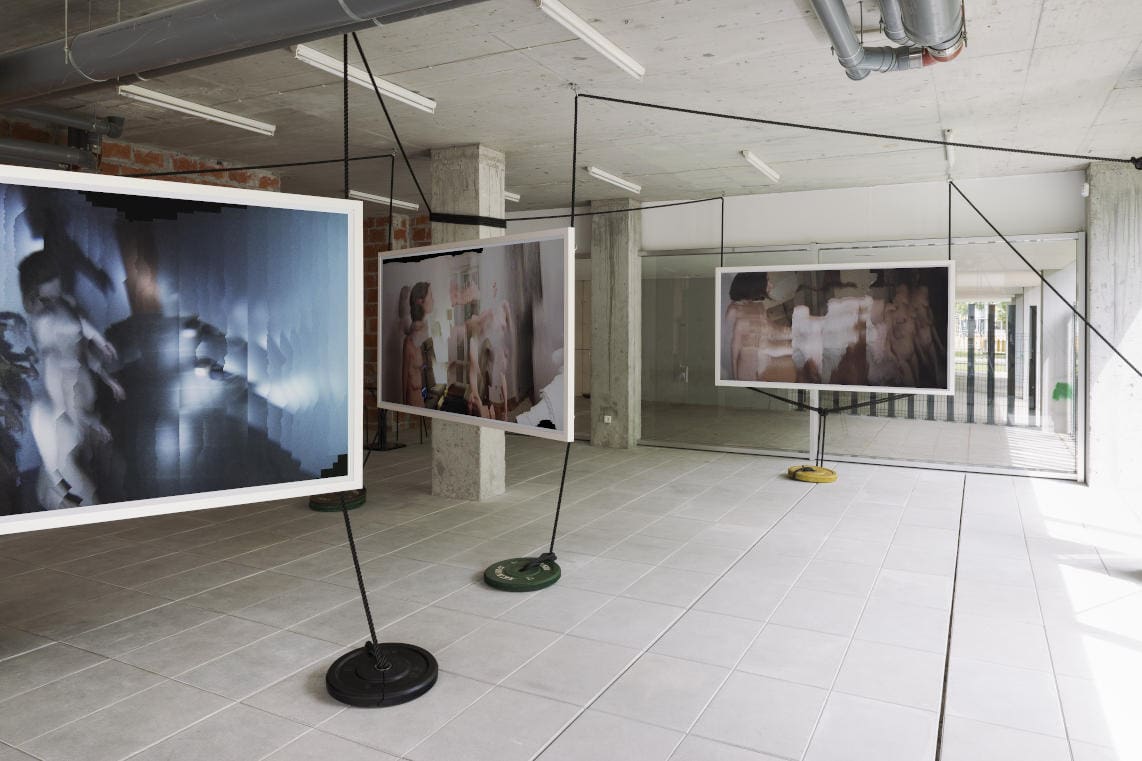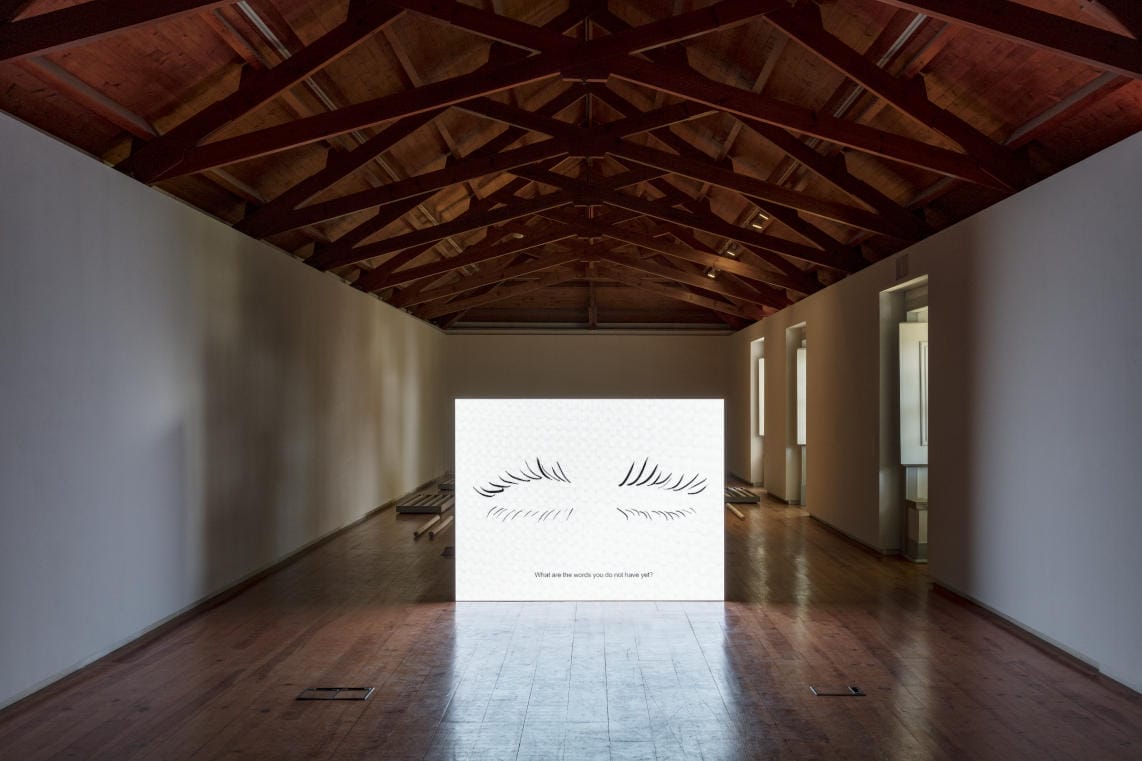Diogo Evangelista works in the field of installation, relying on video or sculpture, but always using a pictorial basis as his starting point. In Organic Machinery, we can see the drawings, although, in this case, the homonymous video was the trigger of the whole set of works exhibited at Galeria Francisco Fino. In addition to this work, we can also see five sculptures in stainless steel, one with a sound-producing speaker embedded, and about 15 drawings, in addition to an orange vinyl that covers the gallery’s window and changes the tonality of its interior, by creating a drowning environment with the sculptures.
Evangelista often uses archive images, which he changes to create his videos. Here we can see a sort of capsule-room, like the Japanese cabin hotels we see in Lost in Translation, which the narrator calls crio bed. Actually, there are plenty of gender-related cinematographic and literary references throughout this video, besides the already mentioned Sofia Coppola’s movie, there is also Kubrick’s 2001: A Space Odyssey or George Orwell’s 1984, with its anti-abuse discourse and call for resistance against a controlling and dreadfully bureaucratic political entity. The tone and colour of the images have also something of Ridley Scott’s Blade Runner (film based on Do Android Dream of Electric Sheep by Philip K. Dick, a literary classic of the genre).
These references do not plunge Organic Machinery into a web of intimidating mentions, instead it broadens its visioning within a genre, sometimes disregarded, which is science fiction, particularly through its paramount opuses. Therefore, we realise that Diogo Evangelista’s dystopian work has a greater purpose, which is to bring to the present the questions that were raised in these classics about society and technological breakthrough in the 60s, 70s and 80s. The fact that these issues are brought by a young man born in 1985 makes this even more relevant.
From one of the Single Breeders metal sculptures, a speaker plays a bird tweeting in a loop. Another sculpture has tiny round mirrors in its edges that show our image. Both establish a bridge between the machine and the human or nature. When we look at that Single Breeders and then into the mirror, we are also a part of that machine, of those metal tubes, just as when we listen to the tweeting of the birds coming from the speaker, built into another Single Breeder, it is actually a machine singing. Thus, they become biomechanical objects. Likewise, when Evangelista handles the quality of natural light entering the gallery, he is operating a mechanical transformation in nature, which in turn will operate a change in the environment where we can see his works.
The fascination we feel for the machine, something that has been recurrent since the Industrial Revolution, has its zenith in biomechanics that has been used in different artistic movements or by different artists, from the constructivists, namely by Vsevolod Meyerhold, who used it in theater, to Jackson Pollock, if we think that his painting motion is nothing more than his will to unite the instrument (the brush) and the artist in a single entity. Therefore, Organic Machinery is an appropriation of something organic and a natural element at all times, something mechanically manipulated by Man (in this case, by the artist himself), structured properly on historical and artistic references.





